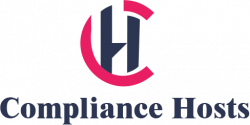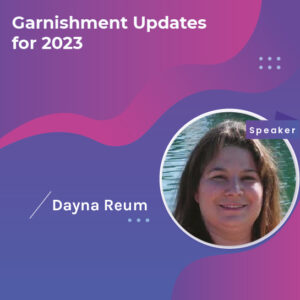Succession Planning for 2023: It’s Not Just for Emergencies – It’s a Leadership Development Strategy
Fortune 500 companies and small family businesses alike share a business need – ensuring that they have the talent necessary to effectively lead their organizations in the future. One of the most significant contributions a leader can make is insuring his/her business’ continuity and sustainability – by having employees who are willing and capable of filling each key position with a plan for doing so when the need arises. Succession Planning is a:
- The deliberate, systematic process of anticipating the need for talent and ensuring that the necessary employee competencies and experience are available when needed in the future
- A strategic approach for avoiding an undersupply of talent, enhancing the organization’s current talent pool, and meeting its future needs
- Not having a Succession Plan can be costly and sometimes disastrous; it’s expensive to recruit, interview, select, onboard and train a new leader and significant opportunity costs are incurred when a key job is not being performed.
Session Highlights:
I. Succession plan
II. Objectives and benefits of succession planning
- Sustain the business through a systematic effort to ensure leadership continuity in key positions
- Encourage HiPos development by:
– Identifying career paths
– Conducting performance appraisals
– Providing daily coaching
– Creating Individualized Development Plans [IDPs]
– Holding Talent Review meetings - Attract, retain and develop high potentials [HiPos]
III. Tools and processes commonly utilized for developing and implementing
- Self-appraisals and career goals
- Performance appraisals, 360 feedback, and ratings
- Assessment instruments
- GE grid
- Individual development plans [IDPs]
- HiPo talent development interventions
- Talent review meetings
IV. What an organization, its leaders, and the program participants need to do to achieve an effective plan what an organization needs to do:
- Supply funding/budget
- Establish a clear vision and guidance for the program
- Develop a formal, written program
- Announce the objectives of the program to all employees
- Ensure that all leaders and managers support the program
What the leaders need to do:
- Have job descriptions developed for their teams
- Conduct effective, formal performance appraisals
- Identify employee developmental areas
- Share their knowledge and experience
- Involve employees in more of the leader’s responsibilities
- Facilitate the completion of IDPs for all Hi Pos
What the program participants need to do:
- Conduct self-appraisals
- Identify their desired career paths
- Learn as much as they can about potential future assignments
- Perform to their capabilities
- Complete their IDP
- Develop the employees reporting to them – so they have successors
V. Potential measures of the program’s success
- Whether there is, at least, one successor for each key position
- Having developmental goals and IDPs established for each successor
- Determining how much of their manager’s job the successors can perform
- Determining whether successors can perform their manager’s jobs when they are unavailable and evaluating their performance during those times
Why You Should Attend:
The primary objectives for and deliverables of a succession Planning program are to:
- Sustain the business through a deliberate and systematic effort to anticipate and ensure leadership continuity in key positions
- Encourage individual development by:
– Identifying career paths
– Conducting formal performance appraisals
– Providing daily coaching
– Creating Individualized Development Plans [IDPs]
- Retain and develop the organization’s high potential [HiPos]
During Succession Planning Programs at the macro level the organization is proactively determining:
- The talent needed in the future
- The talent it has now
- Where there are talent gaps
- The initiatives necessary to close those gaps
At the micro level, the organization is addressing – for each of its key positions – questions such as:
- What the organization would do if it had to fill the position tomorrow
- Whether there is, at least, one successor who could immediately perform the duties of the position
- If there is no successor ready now, what will need to be done to enable the best internal candidate to be ready and when can he/she be ready
- Can the organization afford to wait or would it be better to recruit a successor, etc
Experience has found the following two processes to be very effective in enabling organizations to have the talent they need when it’s needed:
1 Performance Management and/or 360 Feedback Processes – through which the organization is able to:
- Evaluate its employees’ current performance – based on documented, objective performance and achievements
- Assess its employees’ advancement potential
- Determine its employees’ current readiness for advancement
- Obtain from its employees self-appraisals identifying their developmental needs and preferred career plans
- Meet its bench strength needs by initiating Individual Development Plans and experiences – at least, for its players and/or high potentials – such as:
– Special or stretch projects
– Assignments in other depts./job rotations
– ‘Try-out/popcorn stand’ slots
– Mentors
– Formal training and development initiatives
– Fast track programs with exposure to other functions
– Intense coaching, etc.
- Track their A Players’ and High Potentials’ performance and advancement potential against a Performance-Potential Grid
2 Talent Review Meetings – during which the executive team in a disciplined fashion:
- Asks each leader to report on the status of the Individual Development Plans for each of their players and high potential
- Ensure that each player and high potential is receiving regular coaching and is actively involved in opportunities that will help retain them while accelerating their development
- Drives the organization past ‘business as usual by insuring that its future needs for human capital are identified and will be satisfied when the time arrives – as it will
- Succession planning initiatives also increase the levels of engagement and performance of your players and high potentials – the talent your organization will most need in the future.
Who Should Attend:
- HR Professionals new to the field – seeking a comprehensive view of the subject with multiple application initiatives
- Experienced HR Professionals – seeking a refresher
- Leaders and Managers – interested in understanding both how a Succession Plan benefits an organization and how to implement one
Speaker
Pete Tosh is the Founder of The Focus Group, a management consulting and training firm that assists organizations in sustaining profitable growth.
Prior to founding his own firm 25 years ago, Pete had 15 years of experience — at the divisional and corporate levels — in Human Resource and Quality functions. Pete held leadership positions — including the V.P. of Human Resources and Quality — with Allied Signal, Imperial Chemical Industries, Reynolds Metals, Charter Medical, and Access Integrated Networks.
Recorded Webinar: All Time Available
Duration: 60 minutes
Speaker: Pete Tosh
Related products
More Info:
Connect
Quick Links
Sign up
Promotions, new products, and sales. Directly to your inbox.





Reviews
There are no reviews yet.